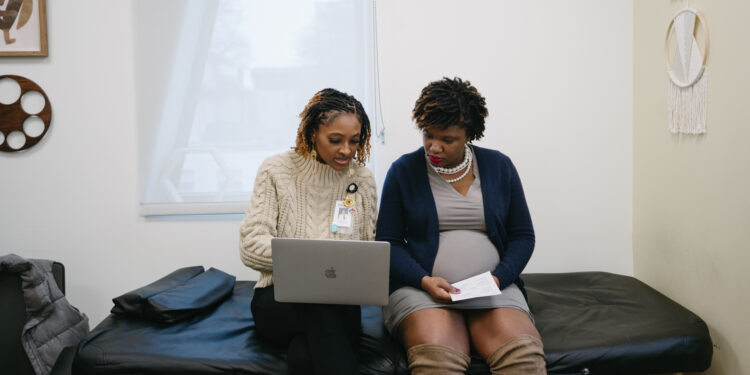Midwives and Violence against Women and Children

Background
It is a fundamental Human Right to live free from violence. Violence against women is defined by the UN as: “[…] any act of gender-based violence that results in, or is likely to result in, physical, sexual or mental harm or suffering to women, including threats of such acts, coercion or arbitrary deprivation of liberty, whether occurring in public or in private life.”
Violence against women occurs worldwide, regardless of country or culture. It originates in social and cultural norms and behaviours privileging men over women. Abuse can have many forms such as intimate partner violence, sexual violence, female genital mutilation, forced marriage and femicideii. The form of violence and its prevalence may vary throughout the world, influenced by factors such as poverty, gender inequality, cultural practices, conflict or disaster and the legal status of women.
Child maltreatment is the abuse and neglect that occurs to children under 18 years of ageiii. Approximately 20% of people report being physically or sexually abused as children. The consequences of child maltreatment may be lifelong, and include physical and mental health problems. A multi-sectoral approach and effective programming that support parents and teach positive parenting skills may prevent child maltreatment before it startsiv.
Violence against women and children causes significant public health problemsv . Violence directly impacts health –physical, mental and sexual – and consequences may persist long after the violence has stoppedvi. The effects on sexual and reproductive are diverse and include gynaecological trauma, psychological trauma HIV, STIs, and urinary tract infection. An unwanted pregnancy may be followed by an unsafe abortion. Physical and sexual violence are also linked to low-birth-weight babies, miscarriage, stillbirth and maternal deathvii viii ix x xi xii.
Position
ICM believes that women and children must be respected and that their human rights should be recognised in all societies. Abuse prevention must be carried out and care for those abused be provided according to the situation in each country or region.
The ICM will work towards the prevention of violence against women and children as a basic Human Right by:
- Lobbying international governmental and non-governmental organisations to address the issue of violence against women and children actively.
- Encouraging its Member Associations to support educational campaigns and strategies towards prevention of violence against women and children.
Recommendations
Member Associations are encouraged to:
- Declare their commitment, as representatives of a profession protecting the health of women and children, to active promotion of abuse prevention
- Demonstrate their anti-abuse position not only to their members but also to the general public
- Extend co-operation to those pursuing campaigns and measures for prevention of abuse, particularly abuse of women and children
- Collaborate with networks, governmental and non-governmental organisations concerned with abuse prevention
- Enable their members to enhance their knowledge of violence recognition and prevention measures and anti-abuse networks, in order to give professional advice as necessary to women
- Support their members in assisting women and children to recognise their rights.
- Member Associations should encourage individual midwives to:
- Be aware of abuse through physical, verbal and non-verbal evidence, and to support women appropriately
- Help women recognise the abuse and refer to abuse support organisations for further consultation, if applicable
- Support women and children to participate in available follow-up programmes.
Related ICM Documents
Other Relevant Documents
- Campbell JC.Health consequences of intimate partner violence. Lancet, 2002, 359(9314):1331–36.
- Heise L, Garcia Moreno C. Violence by intimate partners. In: Krug EG et al., eds. World report on violence and health. Geneva, World Health Organization, 2002:87–121.
- UN.1948.Universal Declaration of Human Rights.
- UN.1979.Convention on the Elimination of All Forms of Discrimination against Women.
- UN.1999. Reproductive Health Rights. Kobe Declaration.
- WHO. 2013. Factsheet No 239. Violence against Women. http://www.who.int/mediacentre/factsheets/fs239/en/
- Plichta SB. Intimate partner violence and physical health consequences: policy and practice implications. Journal of Interpersonal Violence, 2004, 19(11):1296–1323
- UN 1993. Declaration on the Elimination of Violence against Women. www.un.org/documents/ga/res/48/a48r104.htm
- UN General Assembly. 2006. In-depth study on all forms of violence against women. New York, United Nations, 2006.WHO.2014. Factsheet No 150.Child Maltreatment.
Adopted at Glasgow Council meeting, 2008*
Reviewed and adopted at Prague Council meeting, 2014
Due for next review 2020
*Original title of the document: Midwives and the abuse of women and children.
PS2008_010 V2014
i United Nations Declaration on the Elimination of Violence against Women, 85th plenary meeting, December 1993
ii WHO Health consequences of violence against women
iii WHO 2014 Factsheet 150 Child maltreatment iv WHO 2014 Factsheet 150 Child maltreatment v WHO Understanding and addressing violence against women
vi WHO Health consequences of violence against women

